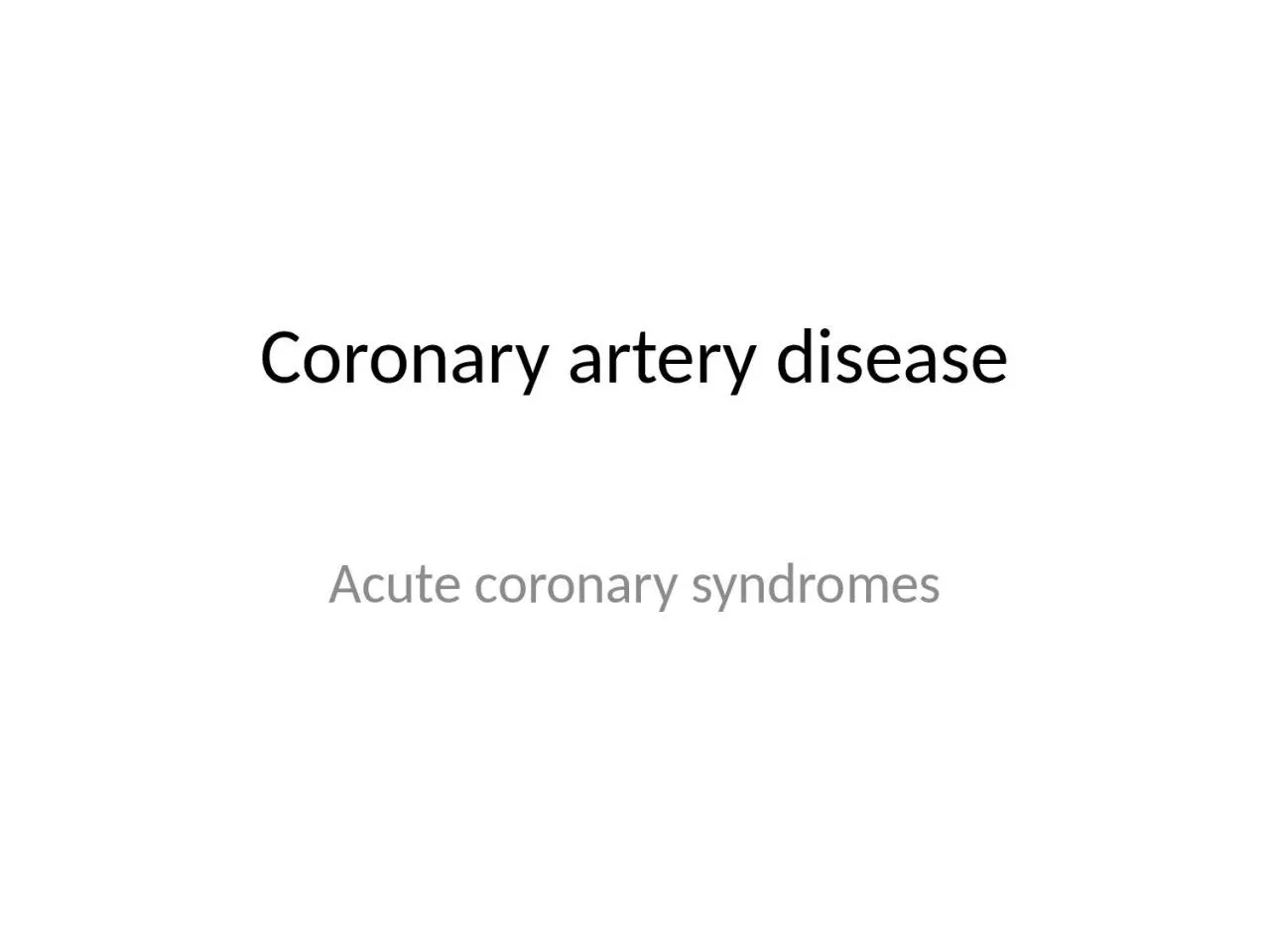

Definition Acute coronary syndrome ACS is a term used to describe a constellation of symptoms resulting from acute myocardial ischemia ACS includes the diagnosis of unstable angina UA nonST elevation myocardial infarction ID: 934587
Download Presentation The PPT/PDF document "Coronary artery disease Acute coronary s..." is the property of its rightful owner. Permission is granted to download and print the materials on this web site for personal, non-commercial use only, and to display it on your personal computer provided you do not modify the materials and that you retain all copyright notices contained in the materials. By downloading content from our website, you accept the terms of this agreement.
Slide1
Coronary artery disease
Acute coronary syndromes
Slide2Definition
Acute coronary syndrome (ACS) is a term used to describe a constellation of symptoms resulting from acute myocardial ischemia. ACS includes the diagnosis of unstable angina (UA), non-ST elevation myocardial infarction
(NSTEMI), and ST elevation myocardial infarction (STEMI).
An ACS resulting in myocardial injury is termed myocardial infarction (MI).
Slide3Acute coronary syndromes
The current nomenclature divides ACS into two major groups on the basis of delivered treatment modalities :-
1- ST elevation myocardial infarction (STEMI)—
an ACS in which patients
present with chest discomfort and ST-segment elevation on ECG. This group of patients must undergo reperfusion therapy on presentation.
2-Non-ST elevation myocardial infarction (NSTEMI) and unstable angina
(UA)—ACS
in which patients present with ischemic chest discomfort
associated with transient or permanent non-ST-elevation ischemic ECG
changes. If there is biochemical evidence of myocardial injury, the condi-
tion
is termed NSTEMI, and in the absence of biochemical myocardial
injury the condition is termed UA. This group of patients
is not
treated
with thrombolysis.
Slide4Slide5Slide6ACUTE CORONARY SYNDROMES
NO ST - elevation
ST - elevation
Unstable angina
NQ w- MI
Q w - MI
NO BIOMARKER RISE
NSTEMI
Slide7Conditions mimicking pain in ACS
Pericarditis
Dissecting aortic aneurysm
Pulmonary embolism
Esophageal reflux, spasm, or rupture
Biliary tract disease
Perforated peptic ulcer
Pancreatitis
Slide8Initial management of ACS
• All patients with suspected ACS should have continuous ECG monitoring and access to a defibrillator.
• Rapid assessment and stabilization is imperative.
Slide9Slide10management of ACS
• Rapid examination to exclude hypotension, note the presence of murmurs, and identify and treat acute pulmonary edema.
• Secure IV access.
• 12 Lead ECG should be obtained and reported within 10 minutes of presentation.
• Give the following:
• Oxygen (initially only 28% if history of COPD)
• Morphine 2.5–10 mg IV prn for pain relief
• Aspirin 325 mg po
• Nitroglycerin, unless hypotensive • Heparin IV and/or Integrilin
• Consider addition of Plavix • Take blood for the following:
• CBC/chemistries Supplement K+ to keep it at 4–5 mmol/L
• GlucoseMay be i acutely post-MI, even in nondiabetic reflecting a stress-catecholamine response and may resolve without treatment
• Biochemical markers of cardiac injury
• Lipid profileTotal cholesterol, LDL, HDL, triglycerides
• Serum cholesterol and HDL remain close to baseline for 24–48 hours but fall thereafter and take 8 weeks to return to baseline.
• Portable CXR to assess cardiac size and pulmonary edema and to exclude mediastinal enlargement.• General examination should include peripheral pulses, fundoscopy, and abdominal examination for organomegaly and aortic aneurysm.